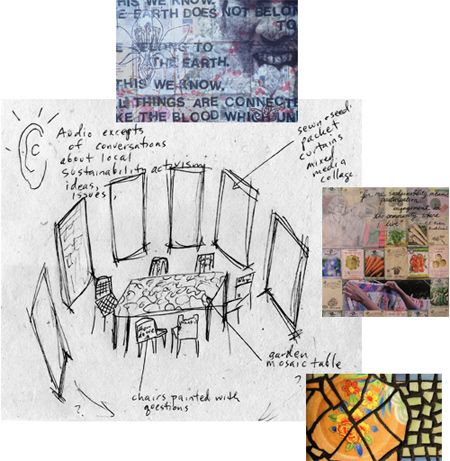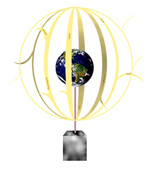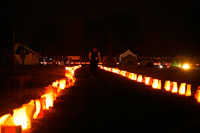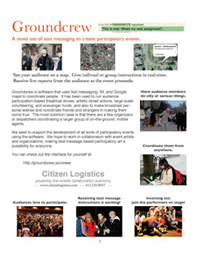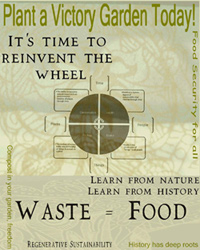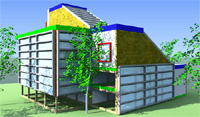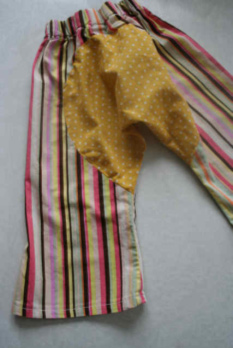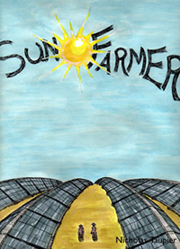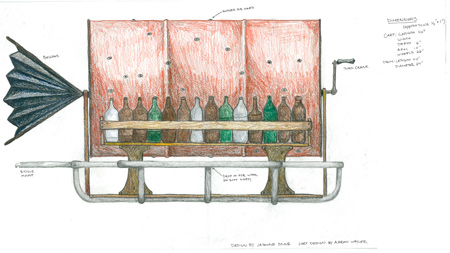Growing Green
L. Maya Apfelbaum
Growing Greener is a multi-media performance piece for all ages. It includes a unique giant solar puppet, dance, visuals and interactive drama. It involves its audience members in facing the questions, sorting through the information, and deciding on doable actions that will help the Pioneer Valley become an increasingly sustainable and restorative region. Growing Greener’s public shows will tie into one or more relevant sustainable action projects co-led by an existing environmental group. Both the show and the follow-up project(s) will be video-recorded to air on TV, U-tube, and/or other media and — in turn — inspire others to learn more and take action towards co-creating a sustainable culture.
I understand and agree that any entry materials I submit become the property of the Pioneer Valley Sustainability Network – via project staff at the PVPC for use by it and its project partners working on sustainability issues throughout the Pioneer Valley. PVSN reserves the right to photograph and or copy any of the entries for reproduction and distribution. I understand that in all cases, credit will be given to the artist or inventor.
We are often bombarded with news about disasters-in-the-making and/or faced with experiences that tell us that change is afoot, prices for food and gas are soaring and water is no longer clean enough for our drinking or even swimming. We may try to integrate that information, push it away or avoid it. We numb out or struggle with decisions.
Performances have been used for centuries to move people, open their minds and hearts, raise awareness and inspire action. I am creating a simple yet powerful multi-media performance that accomplishes all the above while grappling with many aspects of building a sustainable society.
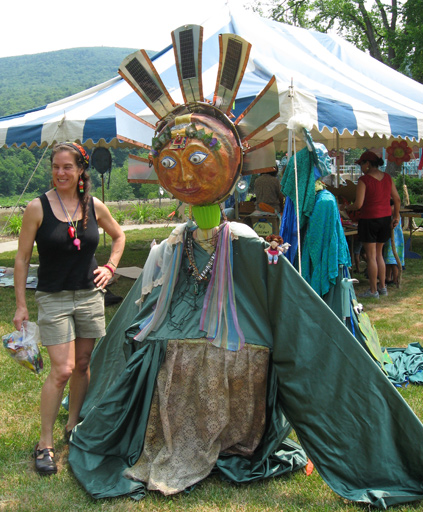 The primary characters in this piece are a man and a woman to whom we can all relate. They are conflicted between their desire for a consumer-oriented, American-Dream life-style and their growing awareness that the earth’s resources, climate and economic situation are calling for change. Our Characters (to be named later) are introduced to a magical being, a giant solar dancing puppet named Sunny Green (see photos), in Act One. Sunny Green serves as a Sustainability Spirit, reappearing and guiding them at tough moments throughout the performance until they finally join her.
The primary characters in this piece are a man and a woman to whom we can all relate. They are conflicted between their desire for a consumer-oriented, American-Dream life-style and their growing awareness that the earth’s resources, climate and economic situation are calling for change. Our Characters (to be named later) are introduced to a magical being, a giant solar dancing puppet named Sunny Green (see photos), in Act One. Sunny Green serves as a Sustainability Spirit, reappearing and guiding them at tough moments throughout the performance until they finally join her.
In Act 2, our friends are confronted with dramatic and sometimes humorous vignettes of different but overlapping sustainability topics. They are challenged about local habitat and species loss; food production, storage and consumption patterns; our carbon footprints and global warming. They begin to take a look at alternative energy, transportation, building and lifestyle choices.
In the final act our friends become clear that they want to take action on living in a sustainable way and influencing those around them. Issues left unresolved in Act 2 begin to find some answers and they join Sunny Green in planting symbolic seeds of hope and in compelling the audience to sign up for an upcoming local sustainability project or event. A soul transformation also is underway and a giant rainbow fish decorated with solar panels and recyclables such as broken glass and bottle caps swims out to celebrate the work underway and to leave us an evocative message about the daring, collaborative and innovative spirit we will need to cultivate to forge ahead.
I work with digital images and a projector; props, puppets and masks made from standard art materials combined with recyclables and scraps (including solar panels), versatile performers and a vast array of theatre, dance, visual and eco- arts skills, as well as community building and educational leadership strengths (see resume).
I will draw upon associations with NESEA, the Hitchcock Center, and the Deerfield and Connecticut River Watershed Councils to help me develop the informational content in the performance. My prior work with leaders in the education, arts, and sustainability fields will help me determine where to present the show and how to hitch the show to action. I intend to inspire new groups of people to become interested in sustainability and to spark new levels of empowerment in those already involved, so we all “grow greener”.
EXPERIENCE
Maya Apfelbaum, M.A.
Professional Experience:
1997-2008 Director, Teacher and Artist. Develop, supervise and teach programs in the creative arts, dance, theatre, environmental and outdoors education for children, youth, adults, and seniors including those with special needs. Work independently and as employee for organizations such as Bonnyvale Environmental Education Center, Brattleboro, VT; Venture into Well-being, Amherst, MA; Hampshire Education Collaborative programs in Turner’s Falls, MA; The Revolving Museum, Lowell, MA; Framingham Community Charter School, Framingham, MA; First Night Boston, Inc.; the Labrador Creative Arts Festival, Canada. Also produced, marketed and performed in original performance pieces and community-based parades (see bottom of pg. 2).
2007-2008 Aquatics Teacher and Lifeguard. Teach water aerobics, therapy and children’s swimming classes part-time at the Greenfield YMCA.
1999-2002 Activities Director, Mt. Ida Rest Home, Newton, MA. Developed and delivered enrichment programs including self-esteem and interpersonal skill-building councils, creative arts, gardening, and literature club activities for a population of multiple-special-needs and elderly residents. Tracked patients’ mental and physical health in logs. Residents showed a marked increase in their positive engagement with life and their physical well-being.
1992-1997 Program Coordinator, Educator and Special Events Developer. Commonwealth Zoological Society’s Franklin Park Zoo, Boston, MA.
Principle Role: Coordinated, budgeted and implemented a grant-funded interdisciplinary program called Zoom into Animals in 15 Boston inner city elementary schools. Taught mainstream and special needs classes. Collaborated with the Boston Public Schools central office, principals, teachers, and zoo staff. Recruited and trained volunteers to help teach and enhance programming.
Secondary Roles: Developed programming and taught 4 years of the Museum Institute for Teaching Science (MITS), an accredited seminar for K-8 teachers. Wrote grants and headed year-long pilot program, Arts and Animals. Helped institute and manage Jungle Dreams overnight adventure program. Led zoo into its first collaboration with and Boston’s Earth Day and First Night celebration and received award for the multi-racial and multi-generational community-building this project entailed. Supervised and trained volunteers including youth from City Year and docents in the Zoo’s education department.
1986-1992 Arts Integration and Experiential Education Teacher: Initiated unique team-building projects and arts-integration curricula while also teaching conservation and outdoor skills classes at Thompson Island Outward Bound, Boston, MA; The New England Home for Little Wanderers and Hillside Shelter, Department of Youth Services facility, Boston, MA. Taught in Head Start and other multi-cultural and special needs pre-school, after-school and camp programs in VT, ME, and MA.
1980-1986 Fundraiser. Campaign organizer, public speaker, door-to-door and telephone fundraiser for Environmental Advocacy Groups such as League of Conservation Voters, Philadelphia, PA; Mass PIRG and GreenPeace, Boston, U.S.A.
Educational Background
2001 M.A., Interdisciplinary Studies. Lesley University, Cambridge. Specialization:
Arts, Multi-Cultural Education and Ecology as applied to Performance, Education and Community Building. Included performance training at N.Y.U. and research in Tennessee. My thesis was an interdisciplinary research and 3 Act theatre script which wove together personal, cultural, historical, economic, socio-political and mythical information about elephants; highlighting how their endangered species status is emblematic of the complex and critical relationships between human populations, wildlife, and questions about reverence for life and use of resources.
1989 B.A., Intercultural Relations. School for International Training, Brattleboro,VT. Thesis: The Arts as Tools for Social Change. Degree work included theatre and cultural studies in a radical Arab-Jewish Theatre and on a kibbutz in Israel, an internship at the Philadelphia Zoo in environmental education, and teaching children at the Cambodian Mutual Assistance Agency in Lowell, MA. Undergraduate studies also included Sociology studies at Oberlin College, OH; and Environmental and Theatre Studies at U. Mass., Amherst.
1980-2008 Continuing Education in Community Building, Non-violent Communication Practices, Special Needs Programming, the Arts, Environmental Advocacy and Deep Ecology through classes, apprenticeships, and intensive workshops.
Performances, Special Events and Festivals
2006-2008 Parade organizer, Performer, and/or leader at festival and fairs such as the the International Dance Parade in NYC; Mother’s Day Peacable Planet Puppet Parade in Northampton, MA; the Green Fair and Green RiverFest in Greenfield, MA; First Night in Northampton, MA; The Folk Festival and SouthEast Asian Water Festival in Lowell, MA; The RiverFest in Shelburne Falls, MA; and The Solar Fest in Tinmotuh, Vt.
2004-2008 Producer, Director, Choreographer, and/or Performer: Directed Bonnyvale Env. Ed. Center’s (BEEC.org) annual Forest of Mystery theatre event in Fall, 07. Performed a variety of short performance pieces at nursing homes throughout Franklin and Hampshire County, Performed The Vagina Monologues, Feb. 2006, Bellows, Fall Theatre, VT. Grand Pele Dance, Oct. and Nov. 2005, at the Pushkin Gallery Opening, Greenfield, MA and at the Women’s Womb and Belly Conference at Sirius Ecovillage, Shutesbury, MA. Ashes and Sparks; a full-scale dance, and sacred theatre event Sept. 2005 at Earthdance, Plainfield, MA. Shadows on the Ground a Hiroshima/Nagasaki commemoration, Aug. 2005, A.P.E. Theatre, Northampton, MA; Inside-Out Women in the World multi-media piece, Oct. 2004 at the Florence Arts and Industry Building, Florence, MA; Heartbeat Trilogy, July 2004, Community Theatre, Westminster West, VT.; Bones, a site specific theatre/dance piece, May 2004 at Earthdance, Plainfield, MA.
2001-2004 Producer and/or Performer of community events or dance and theatre shows:
“Elephants and the Seven Sacred Directions.” 2000-2004 one-woman dance/narrative with live music shown at venues ranging from the international San Francisco Kinship with All Life conference (www.kinshipconference.com) to First Night Boston and Omega Institute (www.eomega.org) in 2002 to the Sacred Theatre Festival in NH. Assistant Artistic Director for All Souls, the Boston metropolitan artist-created multi-media event responding to Sept. 11, 2001 (http://artsept11.twindsl.com). Co-director of the Kosovo Refugees Arts Benefit. Lead artist and workshop organizer for the Spy Pond Festival, July ’03. Dancer in Bill T. Jones’ performance project, Last Supper at Uncle Tom’s Cabin at the Emerson Majestic in Boston, MA. Dancer in Tarnation Improvisational Dance co. (www.luthais.com/tarnation), 2001-2002, Boston, Ma “War R Us” by Rozann Kraus, May 2003; “Passages”, an inter-generational piece produced in June, 2003 at Boston’s Museum of Science, and many other performances.
Travel Experience and Projects
2004 Mexico: study and participate in eco-village communities, ritual, and dance.
2002 Thai: help “Elephant Orchestra” CD project and create dance to music by elephants.
1993 Jamaica: study sub-tropical rainforest ecology and Jamaican theatre and culture.
1988 Israel: study avant-garde political theatre, archaeology, Hebrew, and kibbutz.
65-79 Live and travel in India, Europe, USA, and Mexico with my family.
Volunteer Work
’04-’08 Organizer and participant in development of community vision for Lupinwood.
’97-’08 Director for Earth Day Festivals, holiday parades and other community festivals.
’06-‘07 Events, mask-making, and organizational development with Five Rivers Council.
’96-’03 Lead Organizer/Artist, Friends of Spy Pond conservation group, Arlington, MA.
’95-’01 House Manager and Usher: Dance Complex and Dance Umbrella, Boston, MA
’96-’98 Board of Directors, Dance New England, an organization for which I now teach.



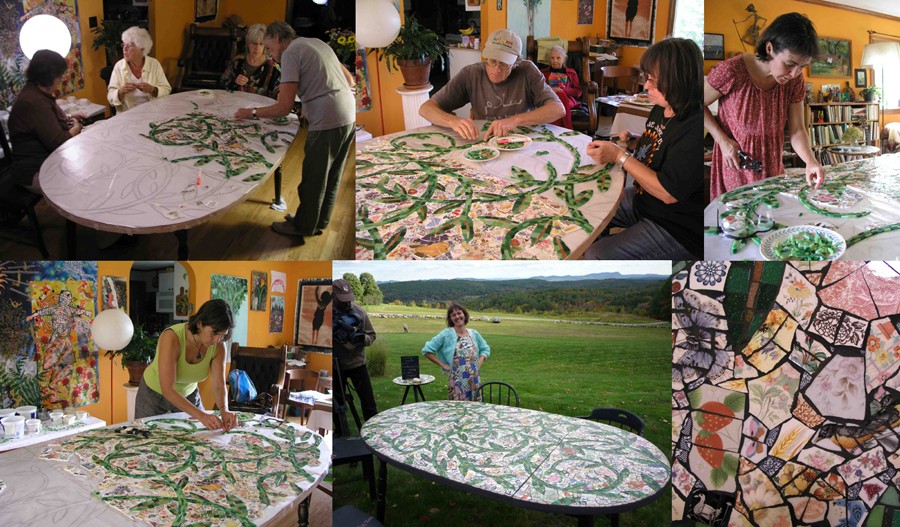

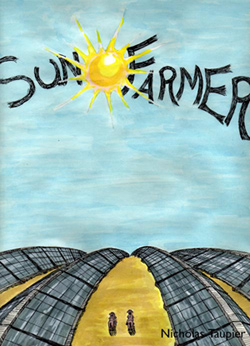
 For the Art of Sustainability contest, I am proposing to research, write, and draw a graphic novel about sustainability. Entitled Sun Farmer, it would be set in the not-too-distant future, in a time when people’s wanton use of energy and lack of foresight has left gas prices soaring, energy shortages sweeping the nation, and global warming changing the environment in which we live. In the setting, the book’s protagonist seeks to create a life for himself, where he can live sustainably off the land, and provide clean, renewable energy to others, all through the power of the sun. Given the quality of the land in the Pioneer Valley, it would make a fine setting for our Sun Farmer, although the scope of the book would make it clear that these are tenable and noble goals no matter where you live. To get a better idea of the concept of sun farmer, please read the attached pages, and consider them to be a “trailer” for the completed work, as you would see for a feature film.
For the Art of Sustainability contest, I am proposing to research, write, and draw a graphic novel about sustainability. Entitled Sun Farmer, it would be set in the not-too-distant future, in a time when people’s wanton use of energy and lack of foresight has left gas prices soaring, energy shortages sweeping the nation, and global warming changing the environment in which we live. In the setting, the book’s protagonist seeks to create a life for himself, where he can live sustainably off the land, and provide clean, renewable energy to others, all through the power of the sun. Given the quality of the land in the Pioneer Valley, it would make a fine setting for our Sun Farmer, although the scope of the book would make it clear that these are tenable and noble goals no matter where you live. To get a better idea of the concept of sun farmer, please read the attached pages, and consider them to be a “trailer” for the completed work, as you would see for a feature film..jpg)
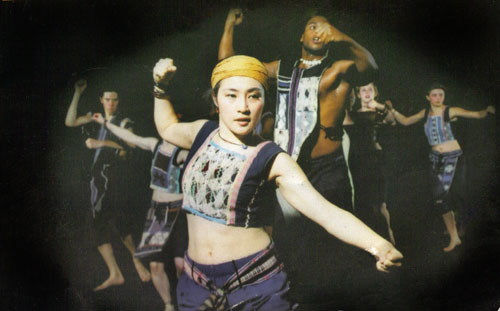
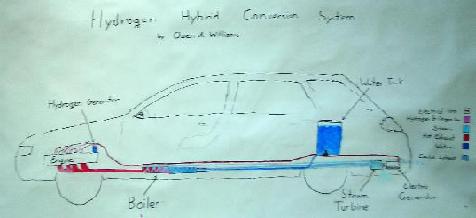
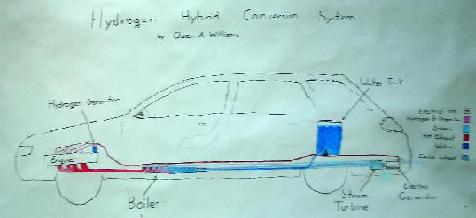
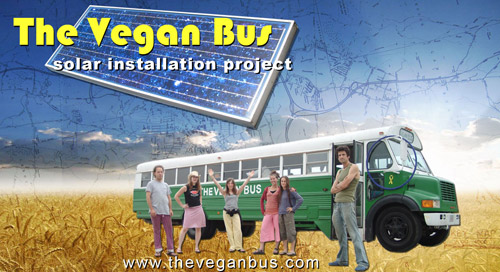

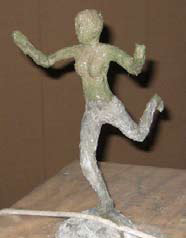
 Brief description : An artistic sculptural media developed here in the Pioneer Valley to provide hundreds of millions of homes for and by the almost half billion people who earn less than one dollar per day.
Brief description : An artistic sculptural media developed here in the Pioneer Valley to provide hundreds of millions of homes for and by the almost half billion people who earn less than one dollar per day.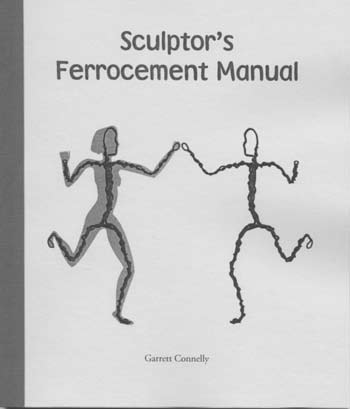
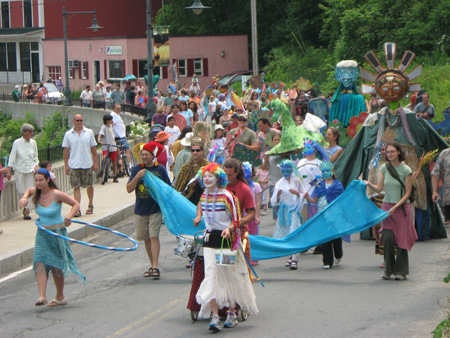

 The primary characters in this piece are a man and a woman to whom we can all relate. They are conflicted between their desire for a consumer-oriented, American-Dream life-style and their growing awareness that the earth’s resources, climate and economic situation are calling for change. Our Characters (to be named later) are introduced to a magical being, a giant solar dancing puppet named Sunny Green (see photos), in Act One. Sunny Green serves as a Sustainability Spirit, reappearing and guiding them at tough moments throughout the performance until they finally join her.
The primary characters in this piece are a man and a woman to whom we can all relate. They are conflicted between their desire for a consumer-oriented, American-Dream life-style and their growing awareness that the earth’s resources, climate and economic situation are calling for change. Our Characters (to be named later) are introduced to a magical being, a giant solar dancing puppet named Sunny Green (see photos), in Act One. Sunny Green serves as a Sustainability Spirit, reappearing and guiding them at tough moments throughout the performance until they finally join her. 